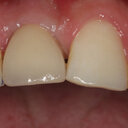Catalan
Albanian
Arabic
Armenian
Azerbaijani
Belarusian
Bengali
Bosnian
Catalan
Czech
Danish
Deutsch
Dutch
English
Estonian
Finnish
Français
Greek
Haitian Creole
Hebrew
Hindi
Hungarian
Icelandic
Indonesian
Irish
Italian
Japanese
Korean
Latvian
Lithuanian
Macedonian
Mongolian
Norwegian
Persian
Polish
Portuguese
Romanian
Russian
Serbian
Slovak
Slovenian
Spanish
Swahili
Swedish
Turkish
Ukrainian
Vietnamese
Български
中文(简体)
中文(繁體)
Der Orthopade 2019-Mar
Només els usuaris registrats poden traduir articles
Inicieu sessió / registreu-vos
L'enllaç es desa al porta-retalls
La base de dades d’herbes medicinals més completa avalada per la ciència
- Funciona en 55 idiomes
- Cures a base d'herbes recolzades per la ciència
- Reconeixement d’herbes per imatge
- Mapa GPS interactiu: etiqueta les herbes a la ubicació (properament)
- Llegiu publicacions científiques relacionades amb la vostra cerca
- Cerqueu herbes medicinals pels seus efectes
- Organitzeu els vostres interessos i estigueu al dia de les novetats, els assajos clínics i les patents
Escriviu un símptoma o una malaltia i llegiu sobre herbes que us poden ajudar, escriviu una herba i vegeu malalties i símptomes contra els quals s’utilitza.
* Tota la informació es basa en investigacions científiques publicades




